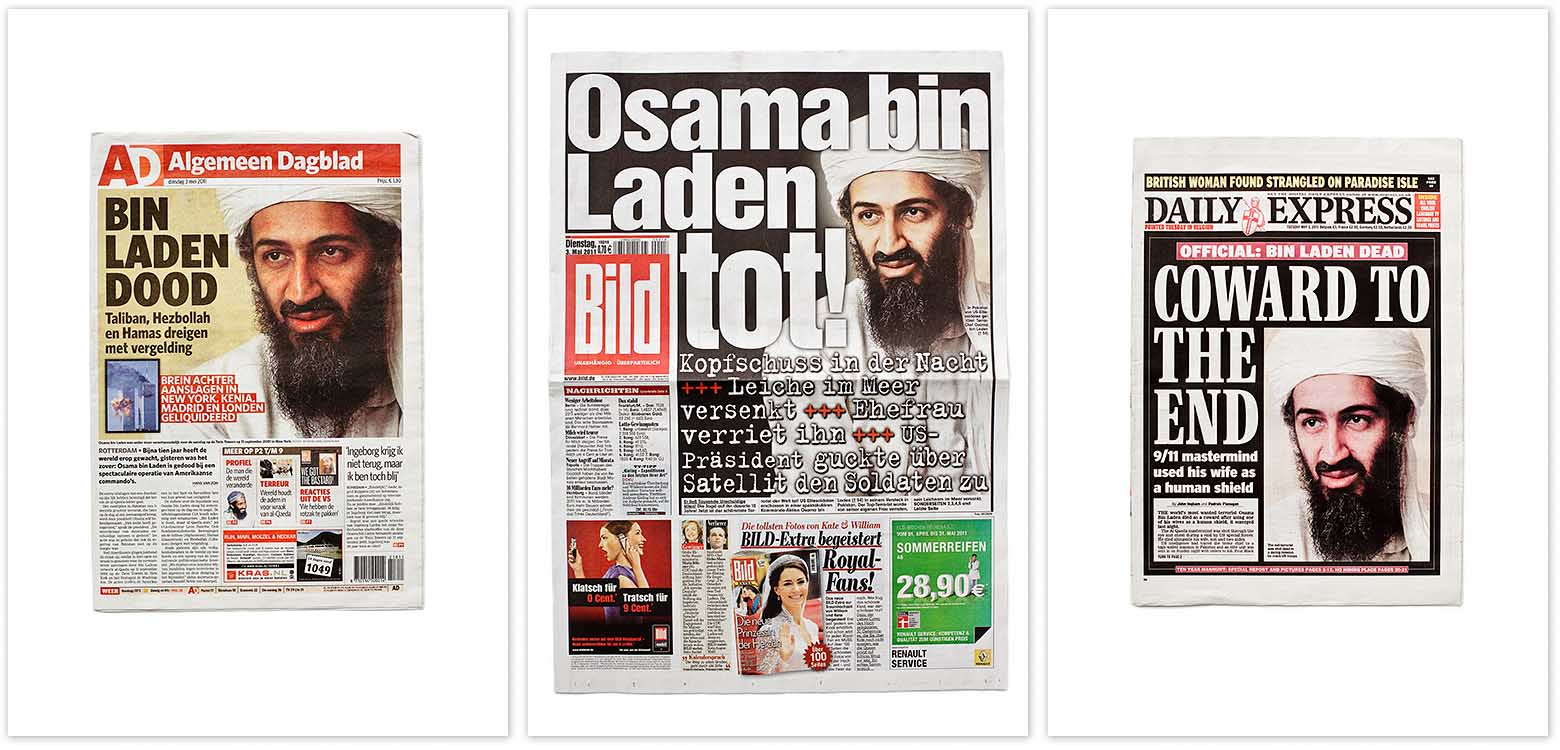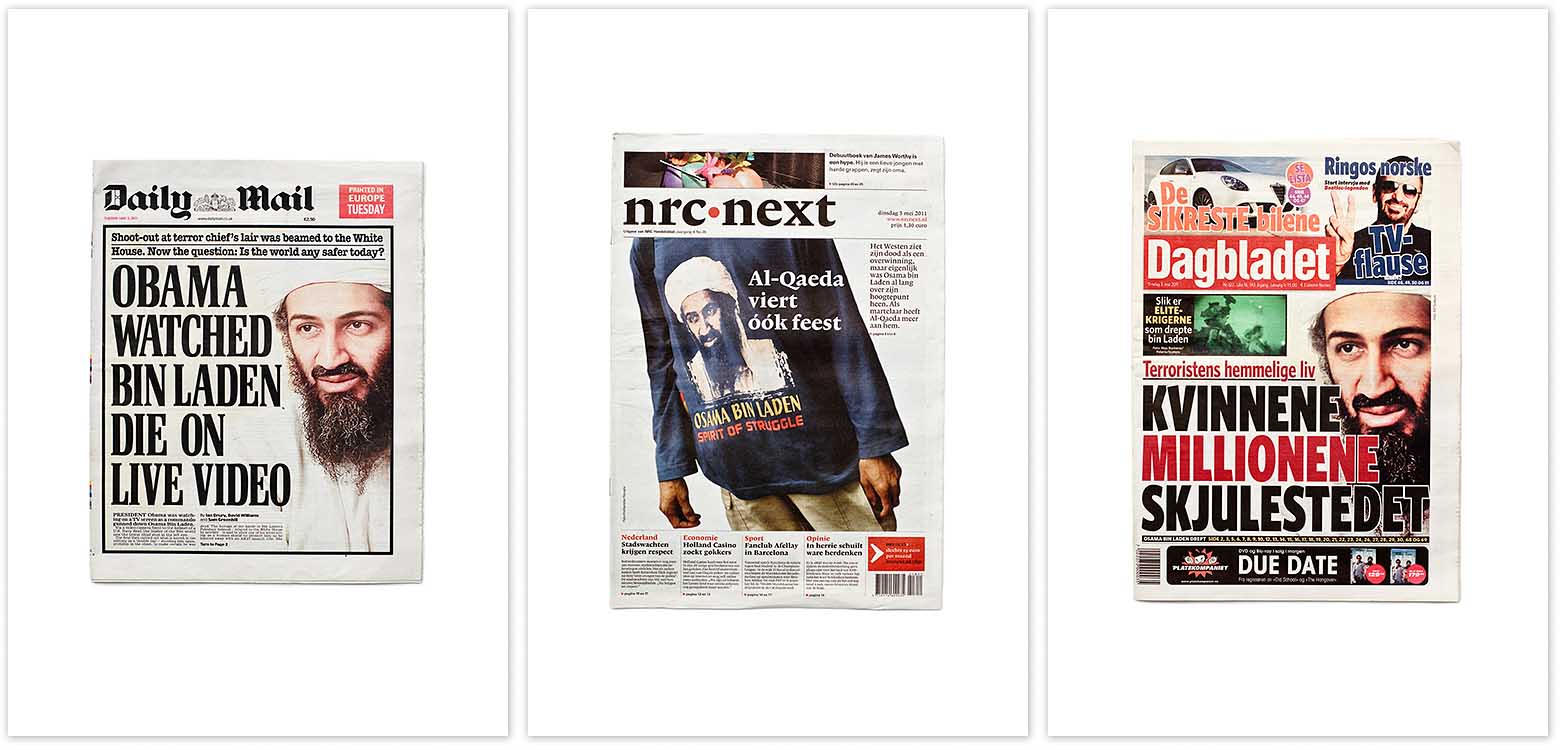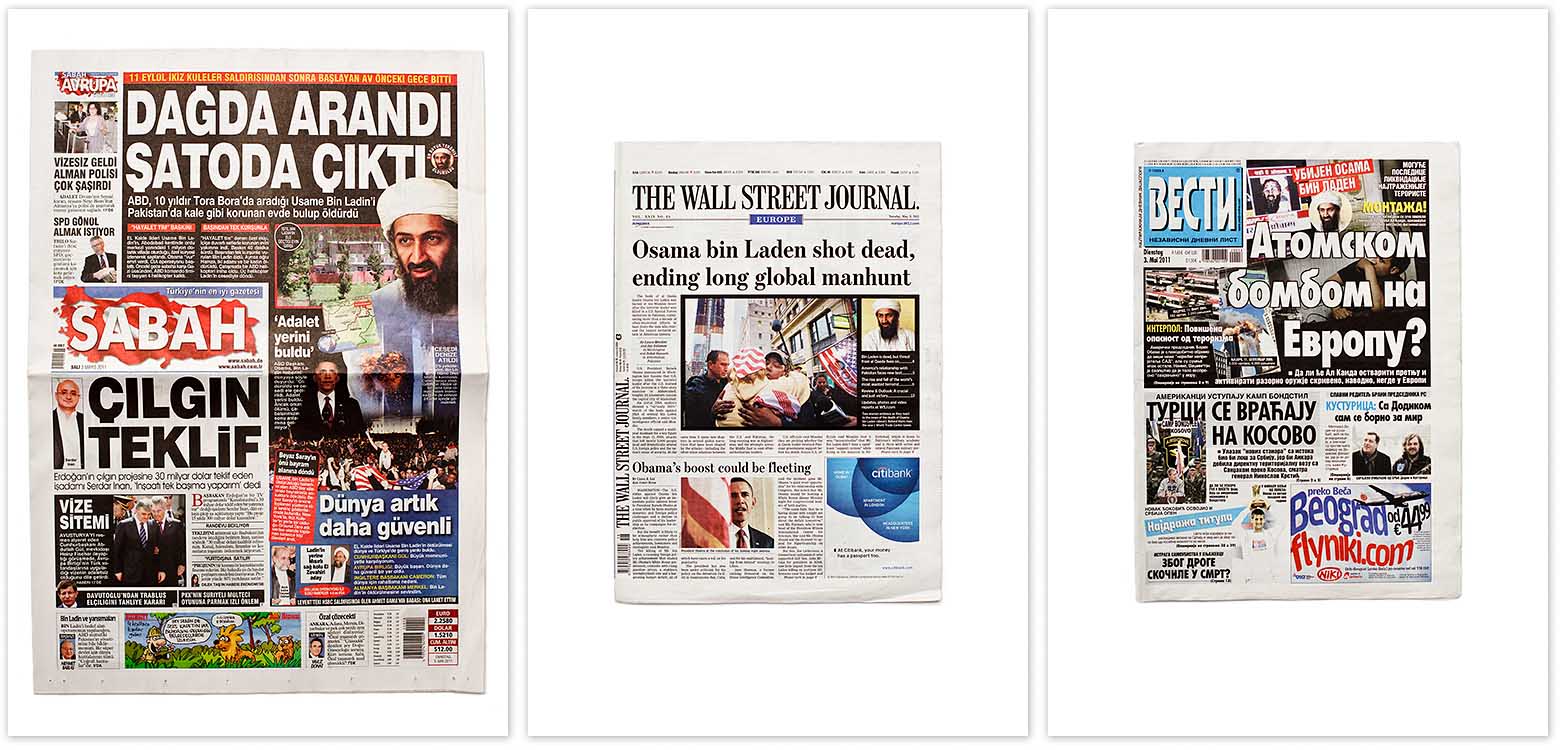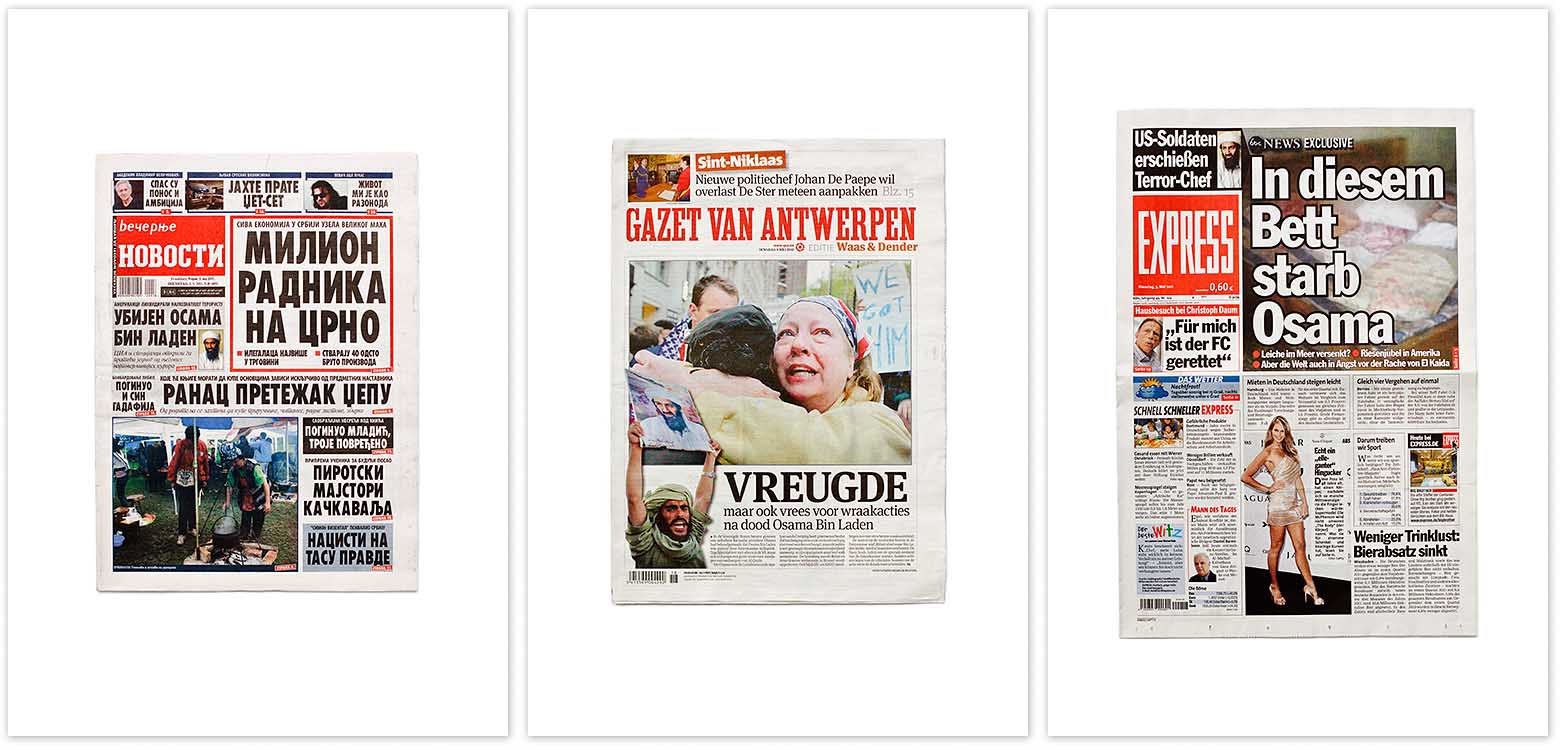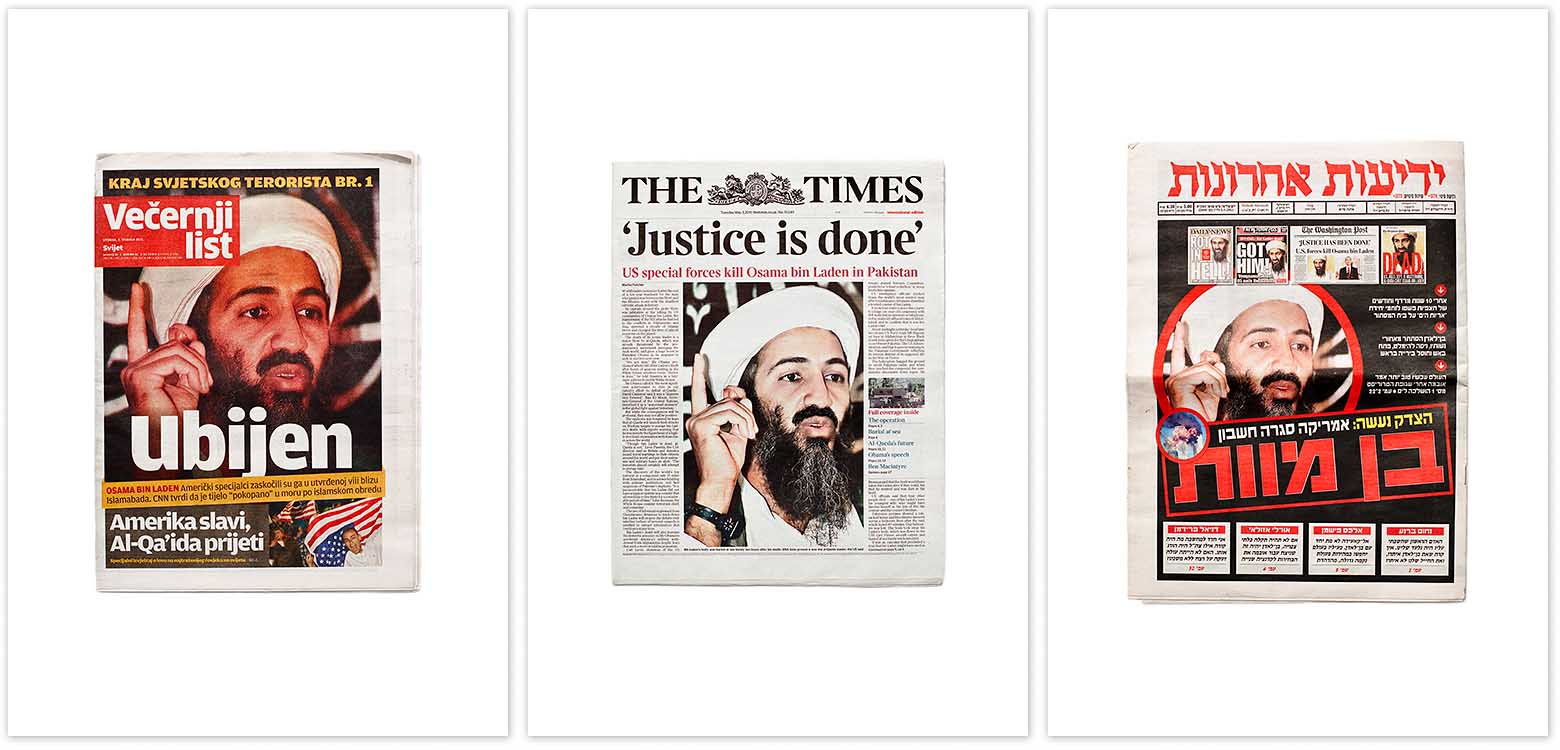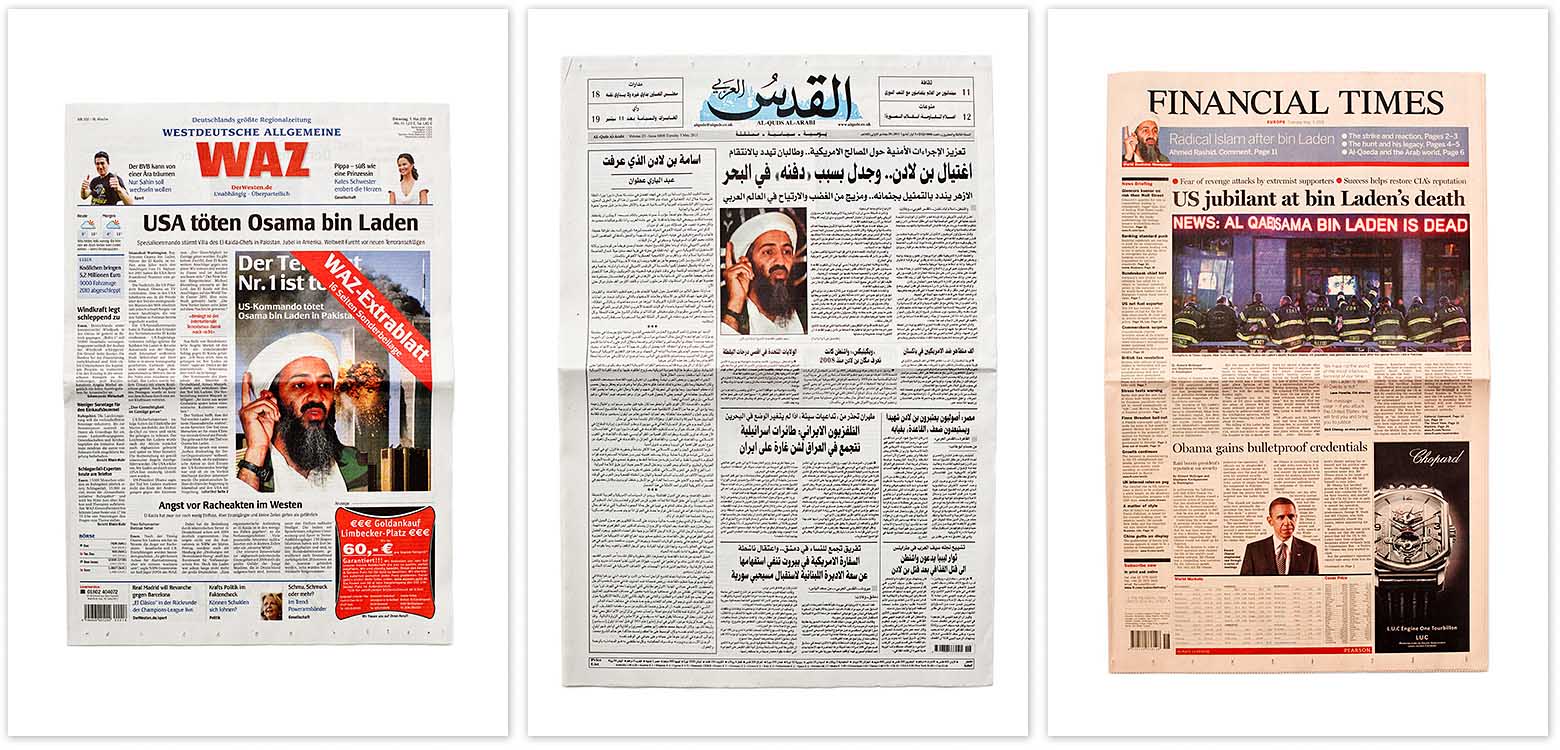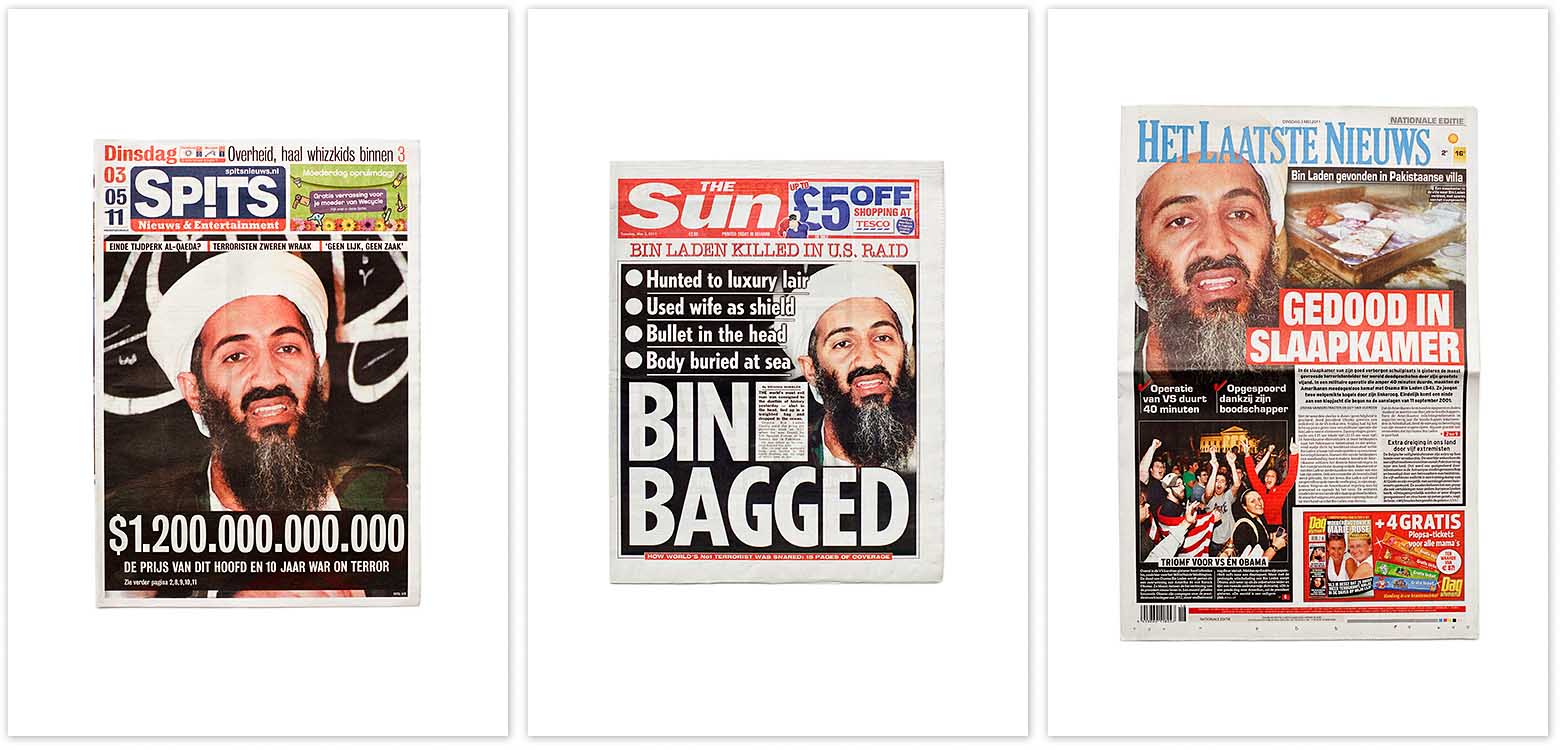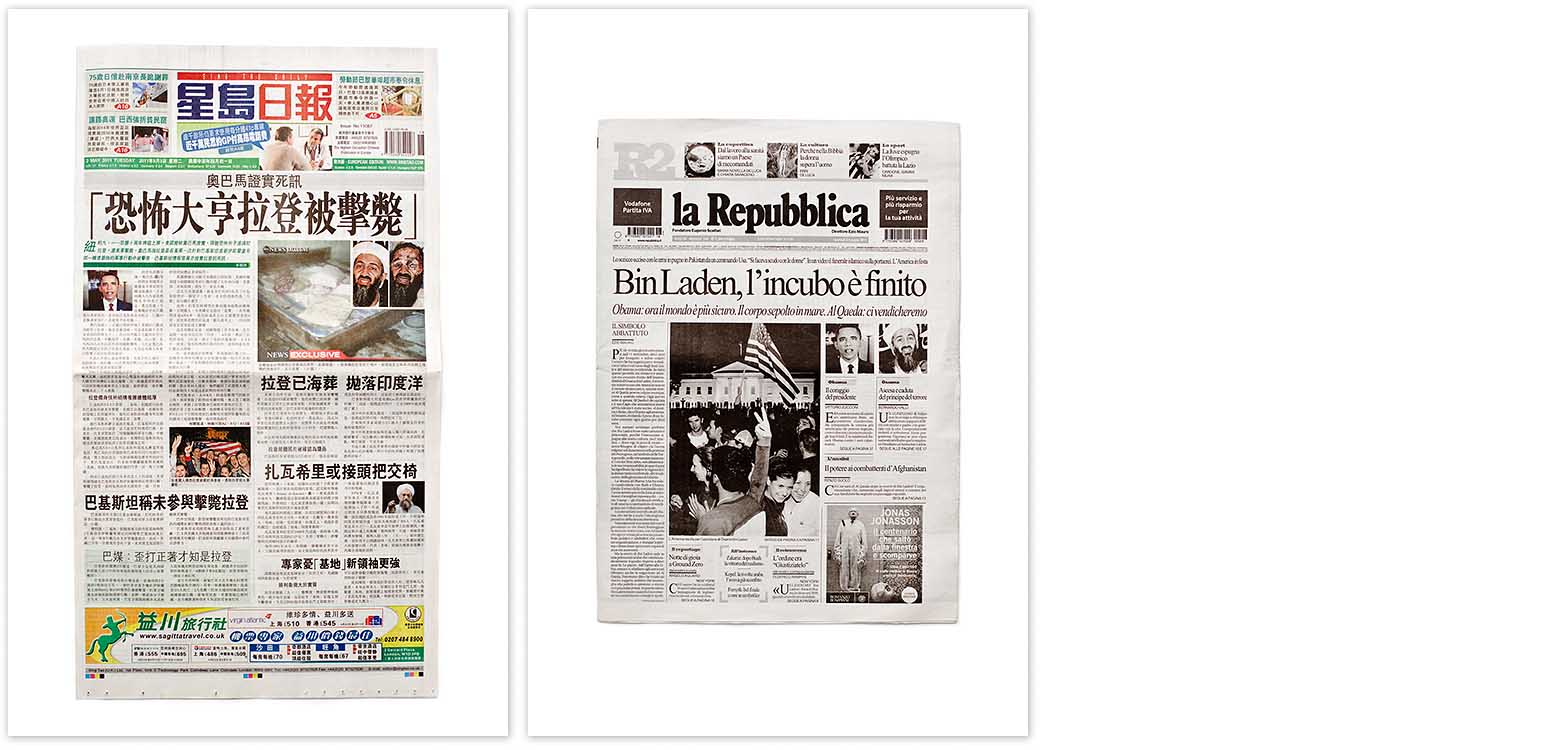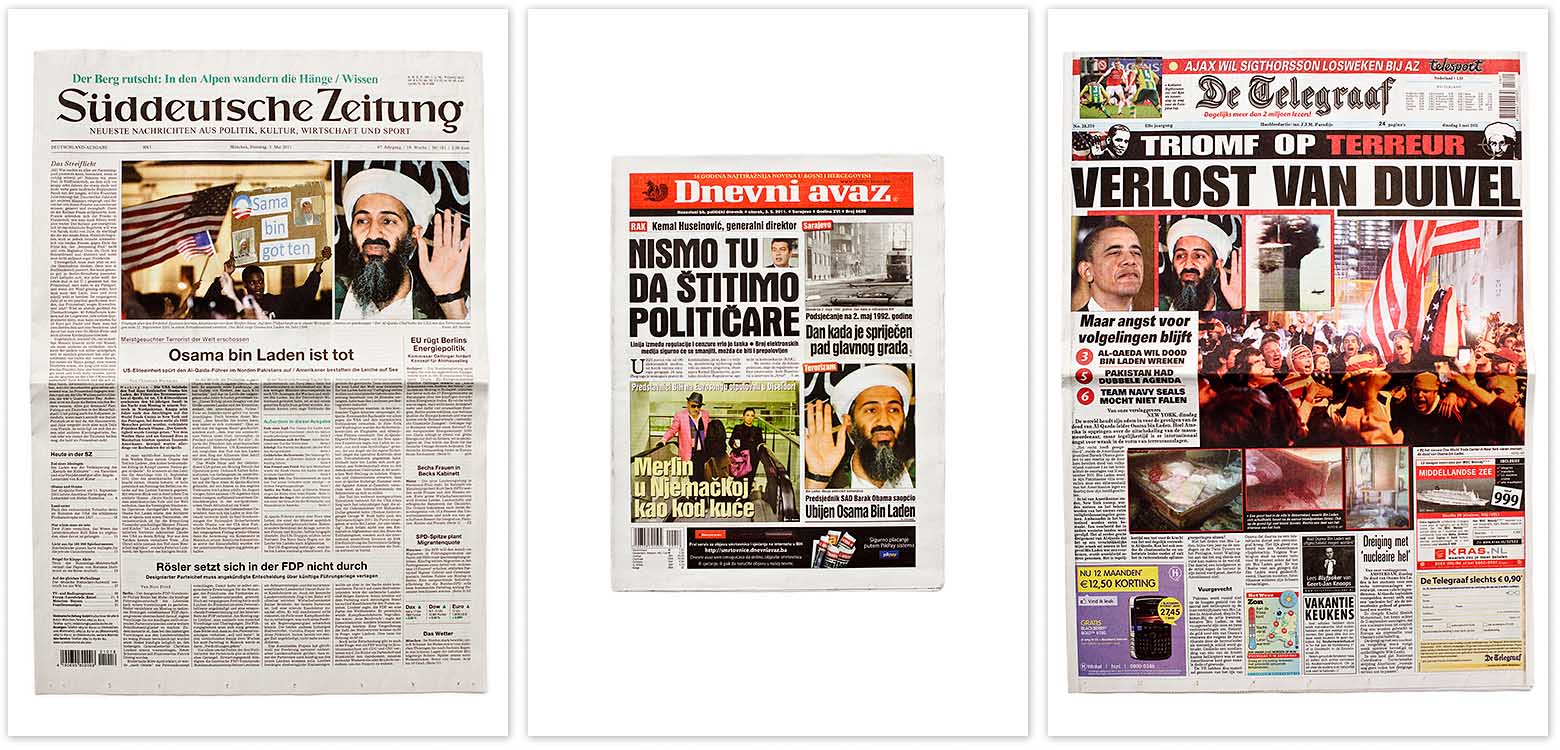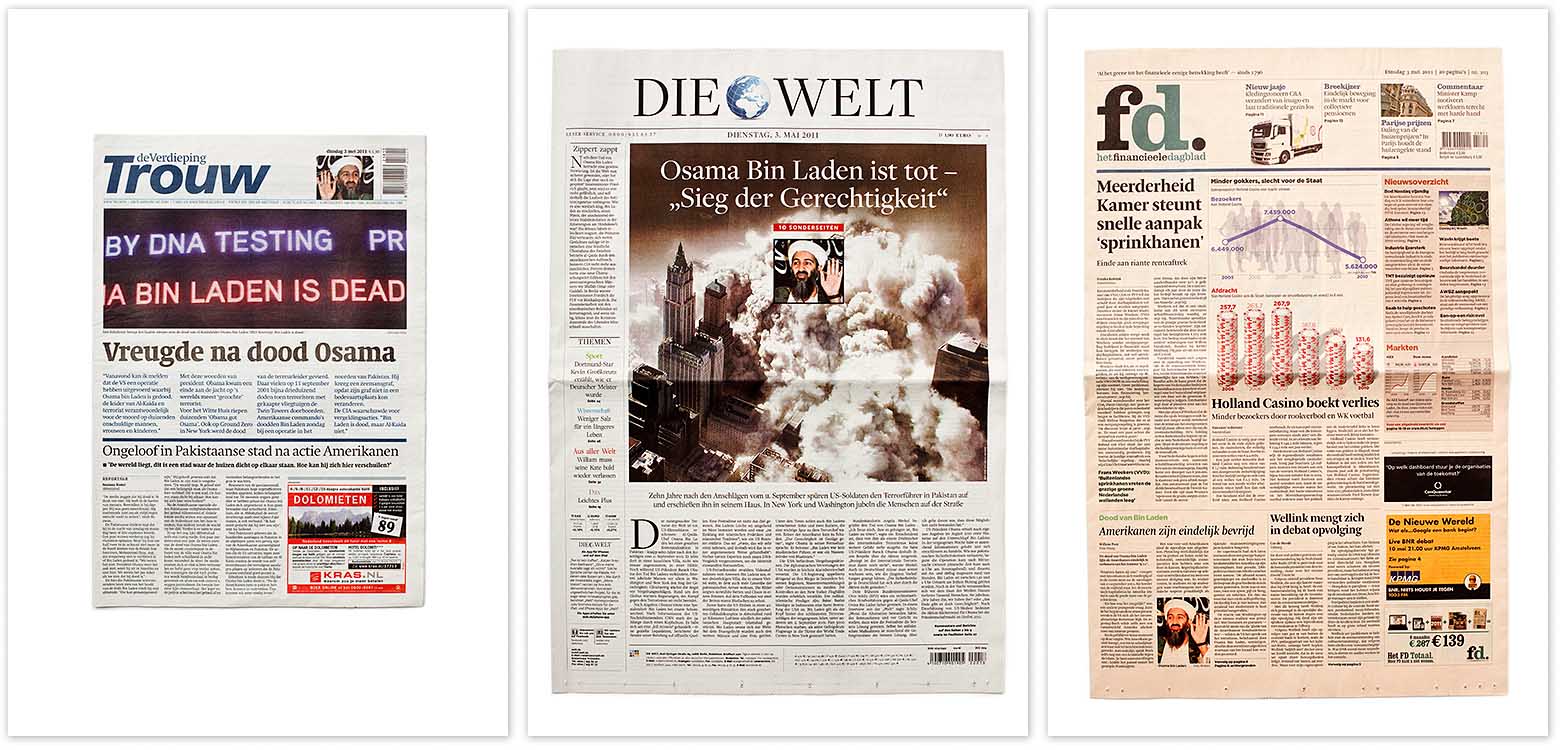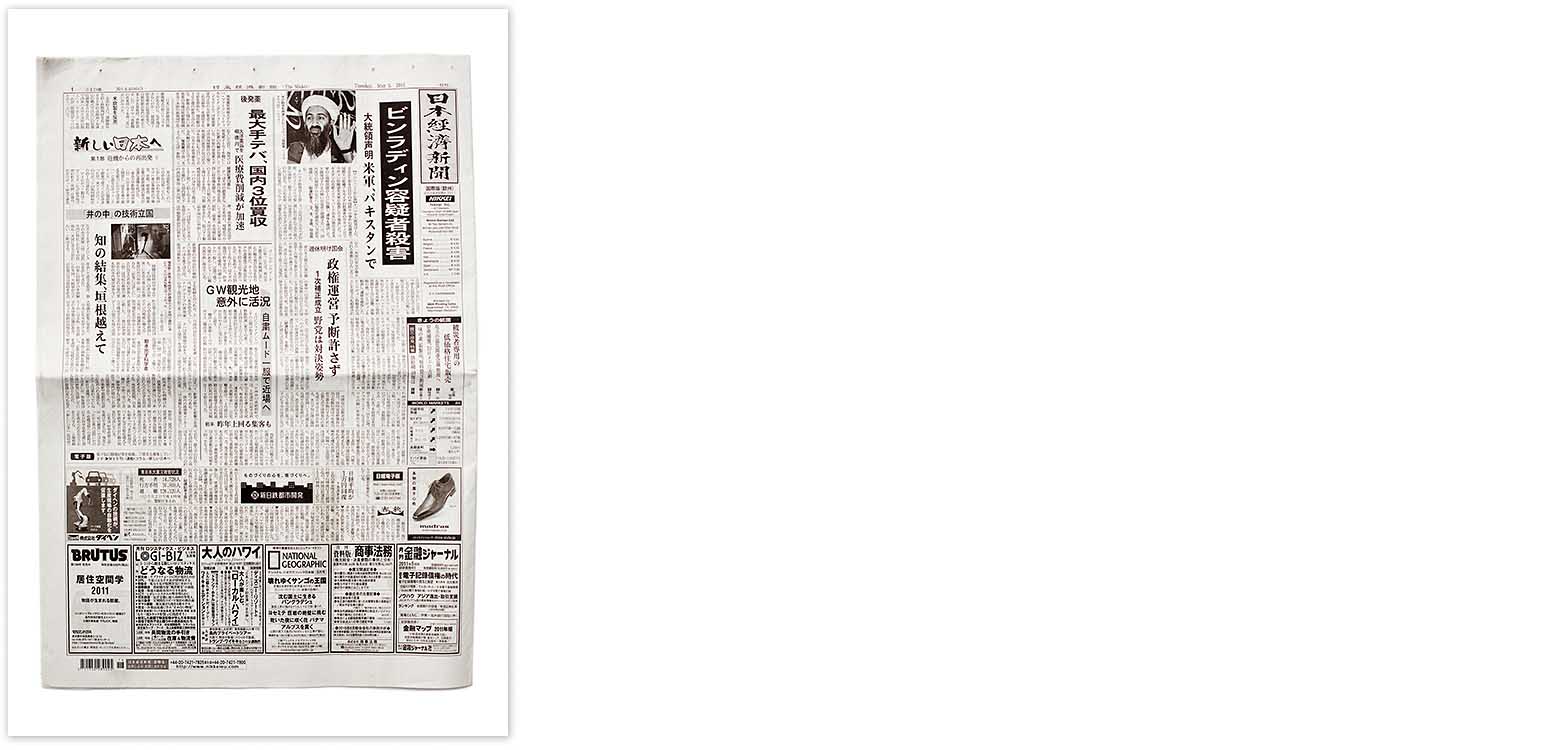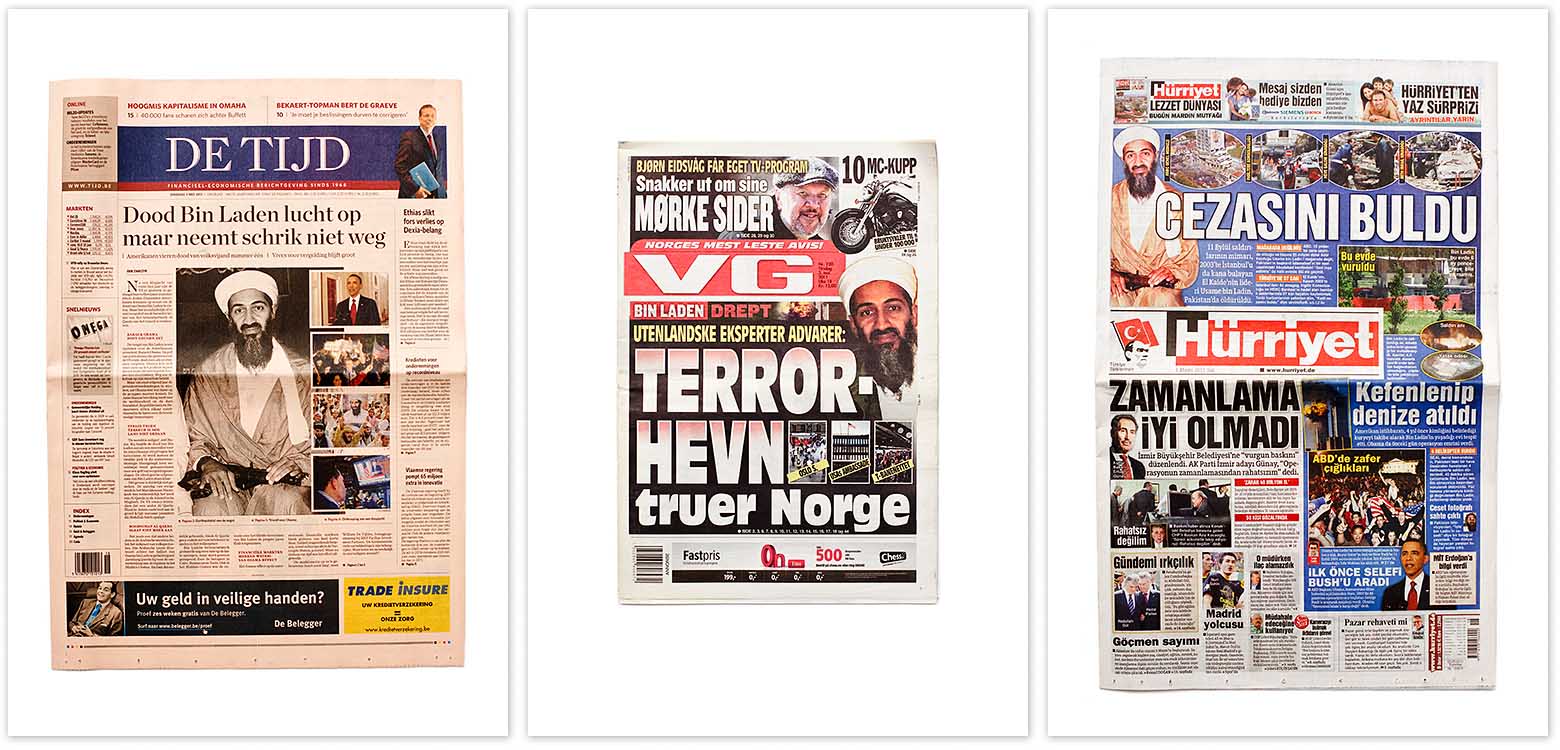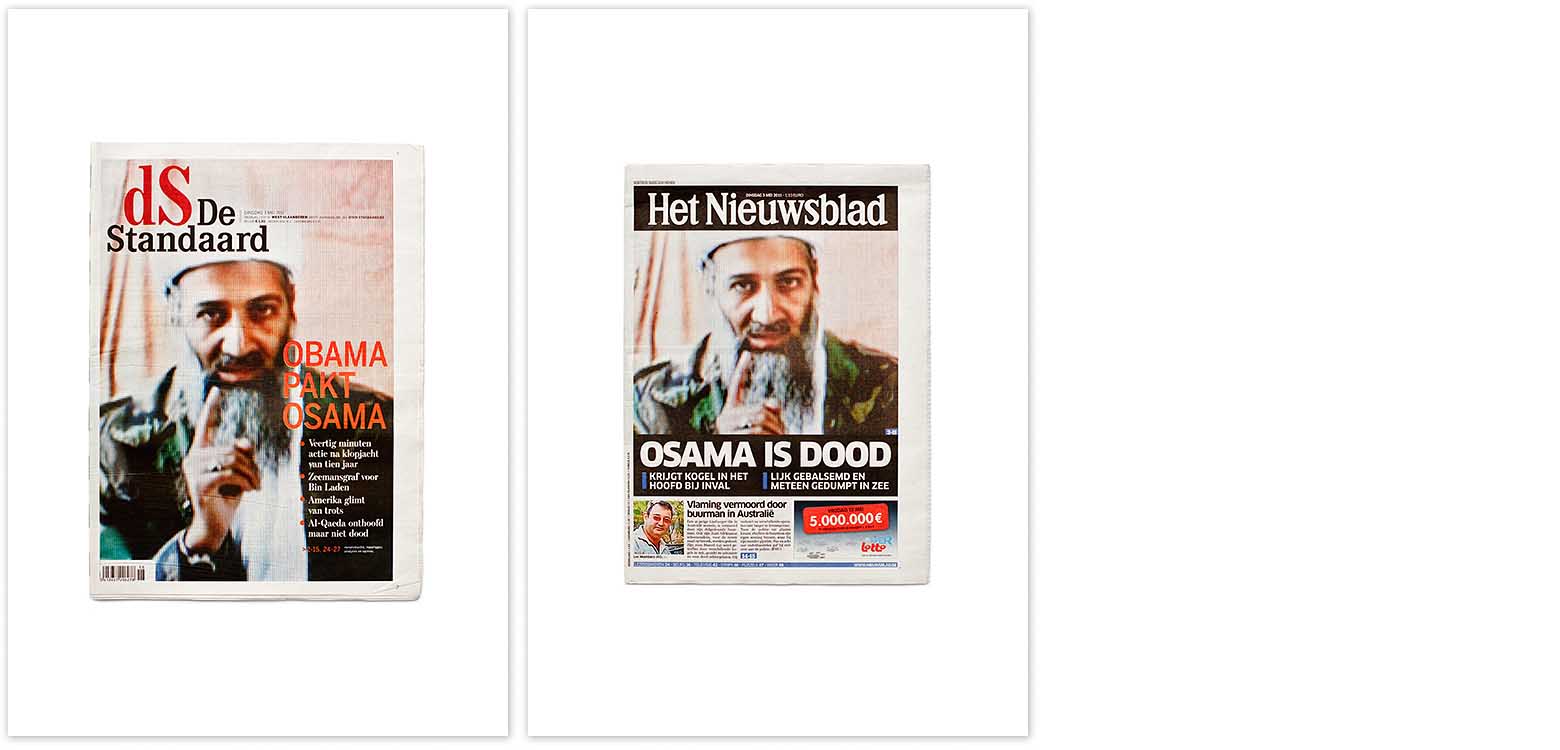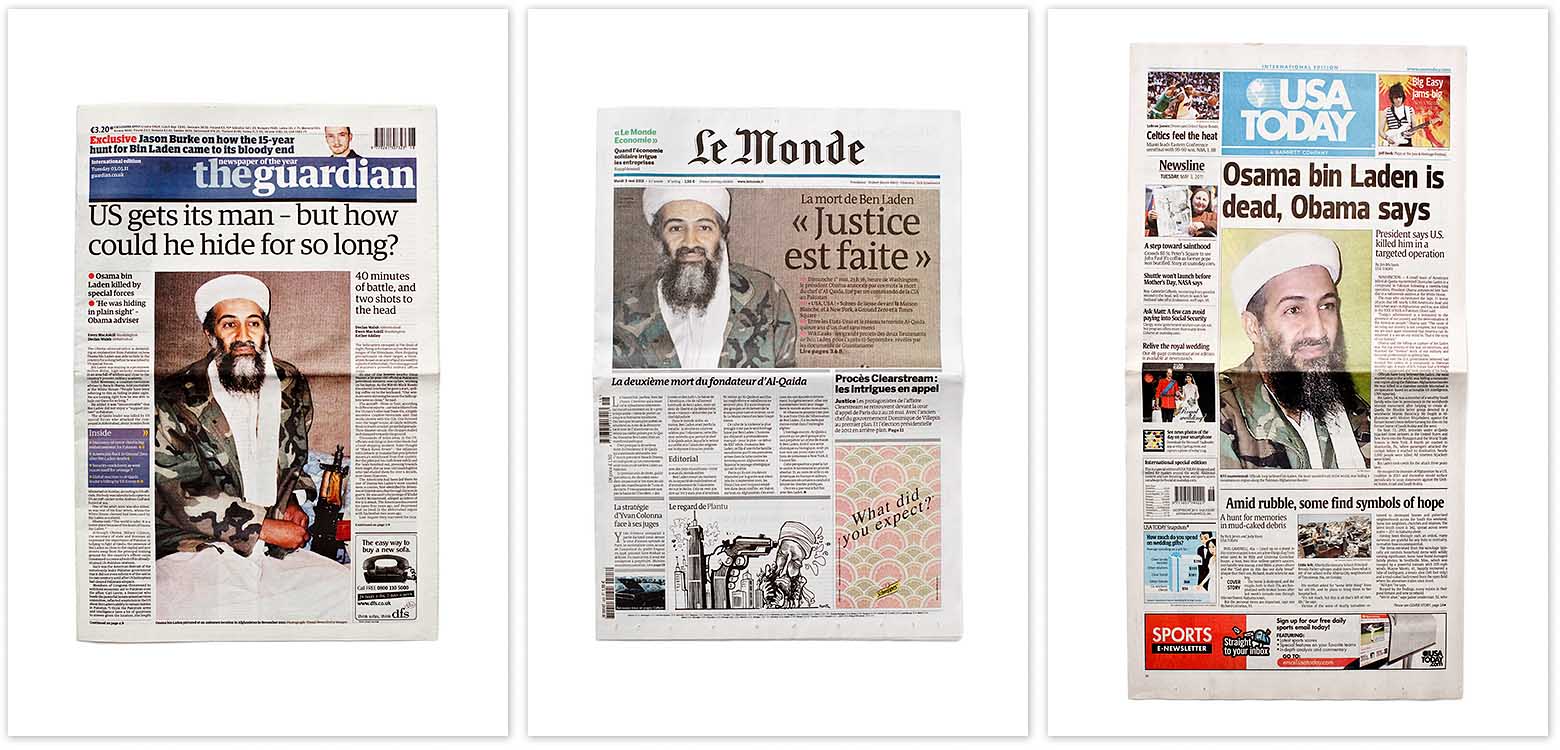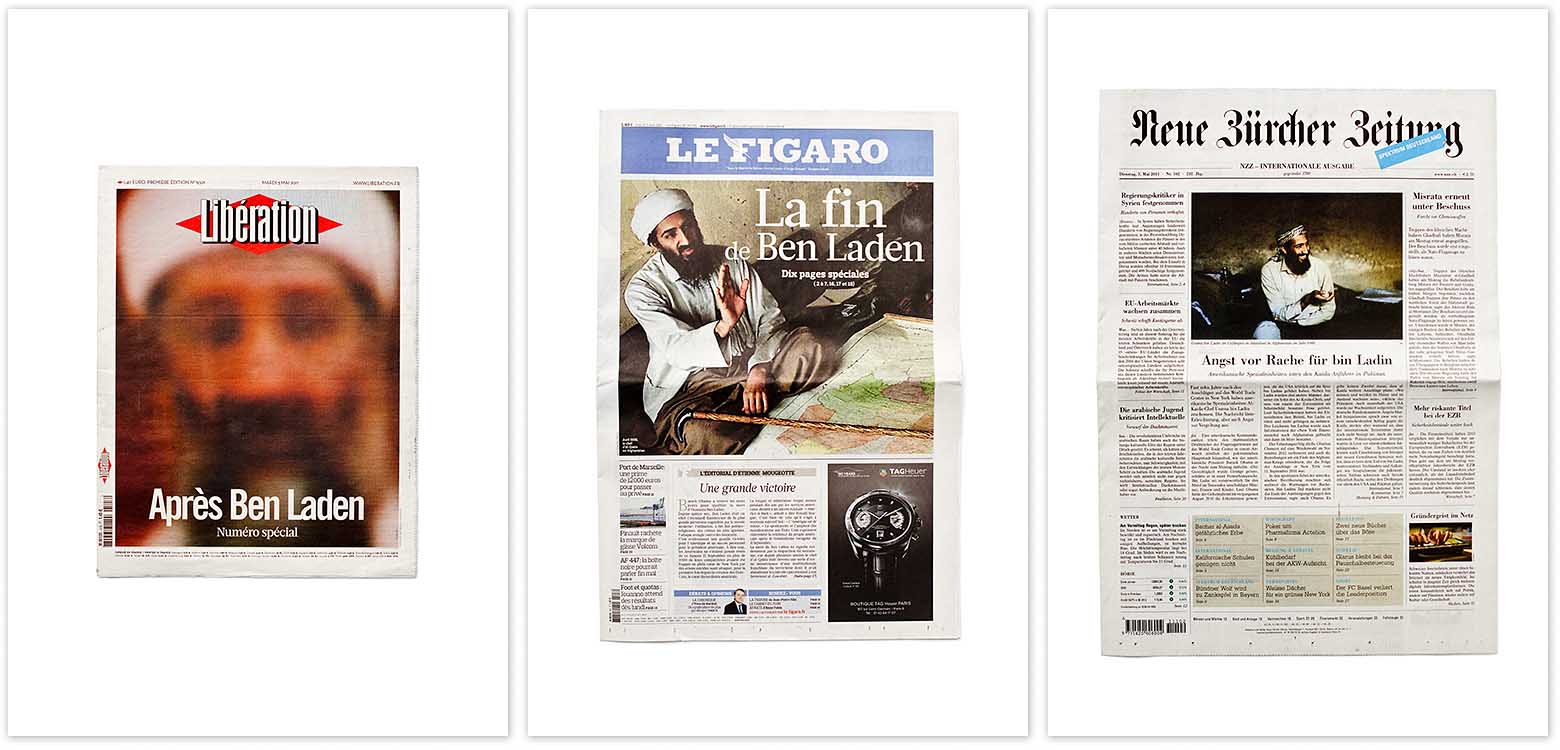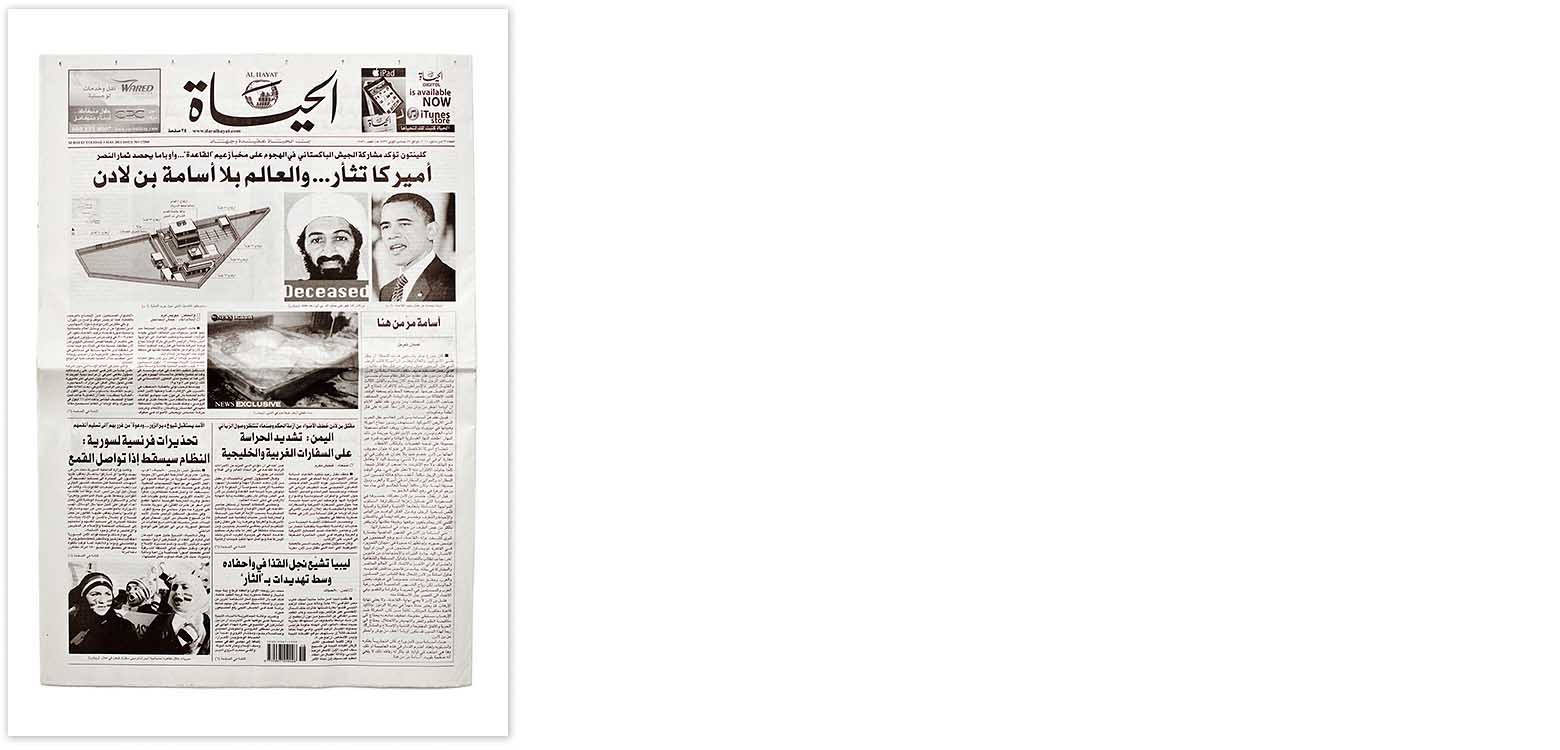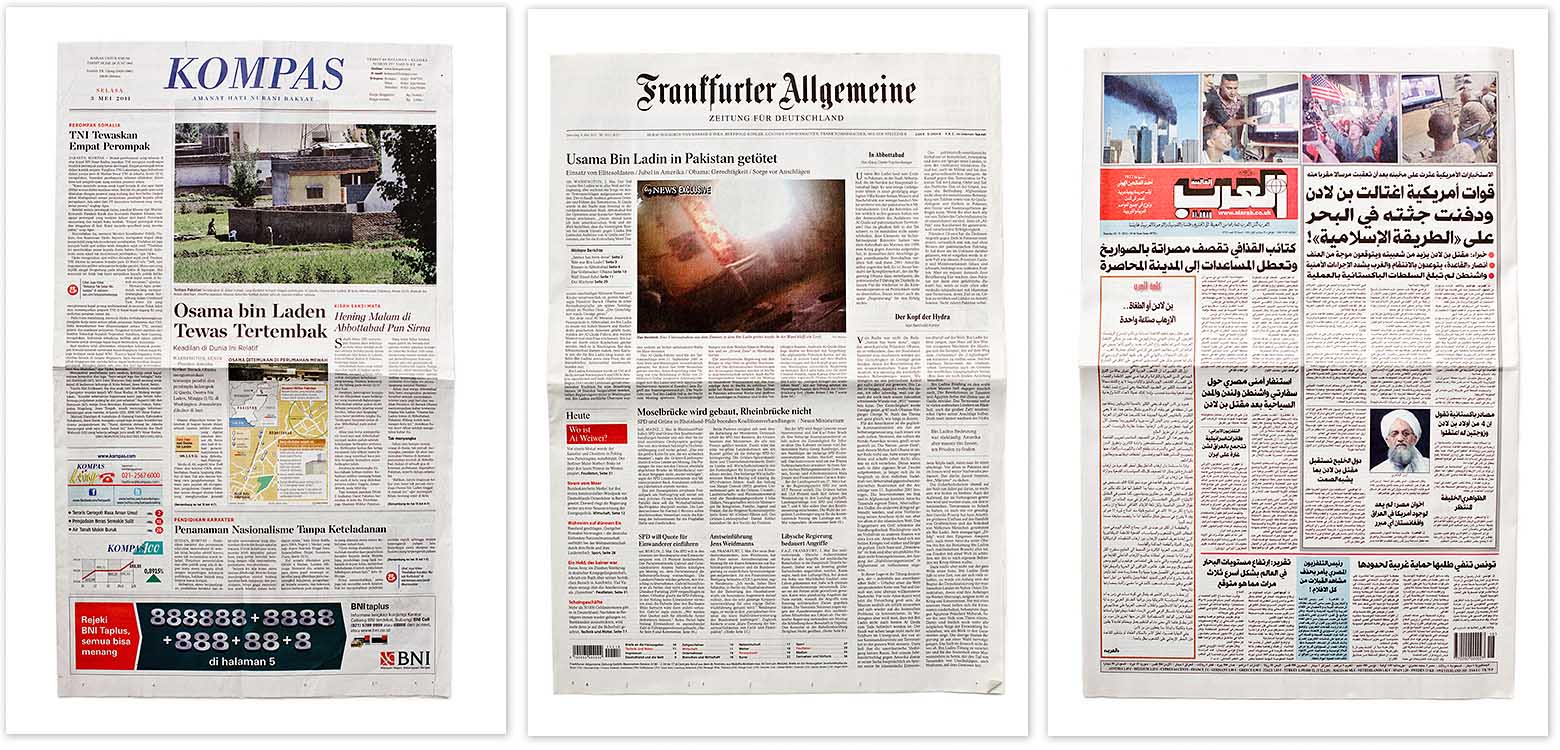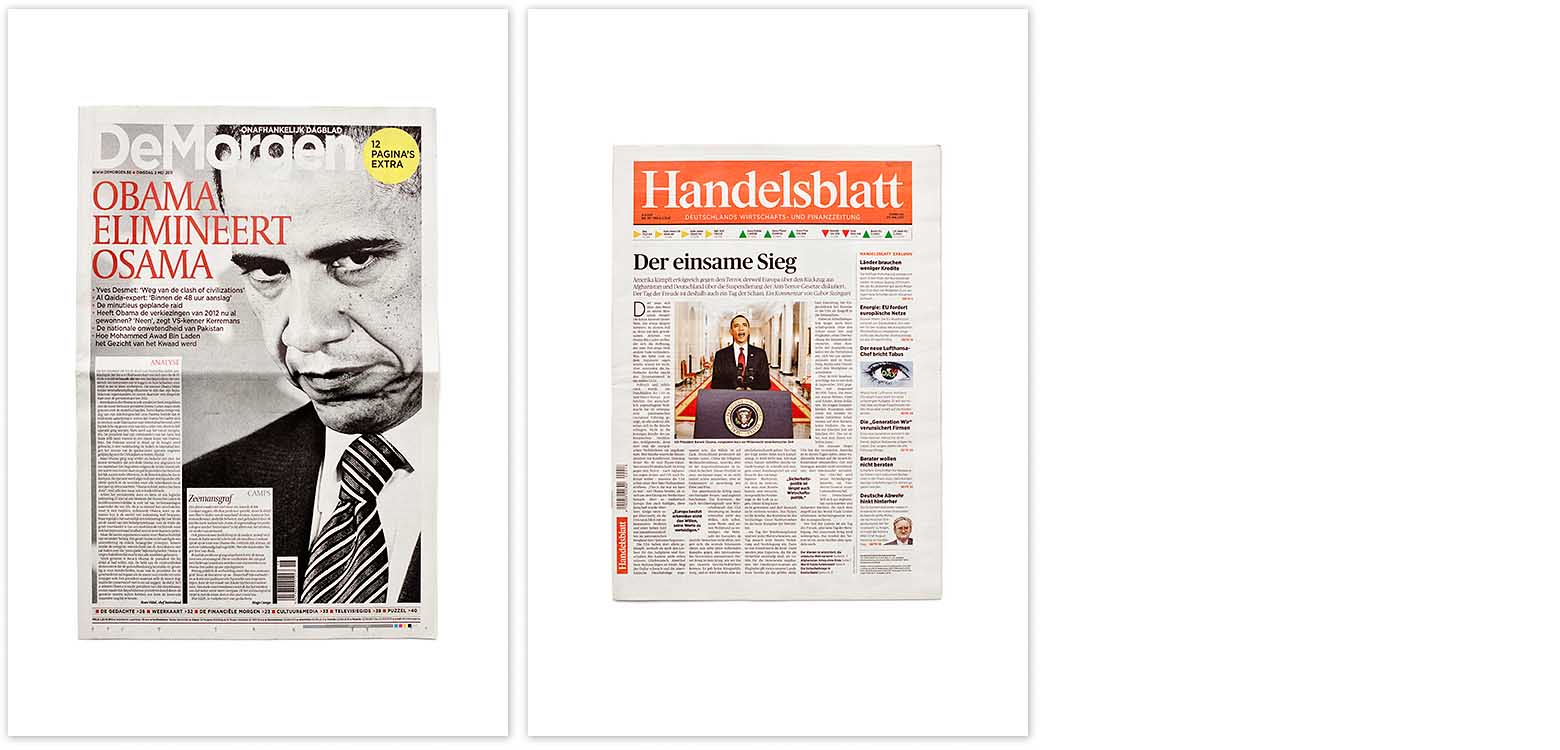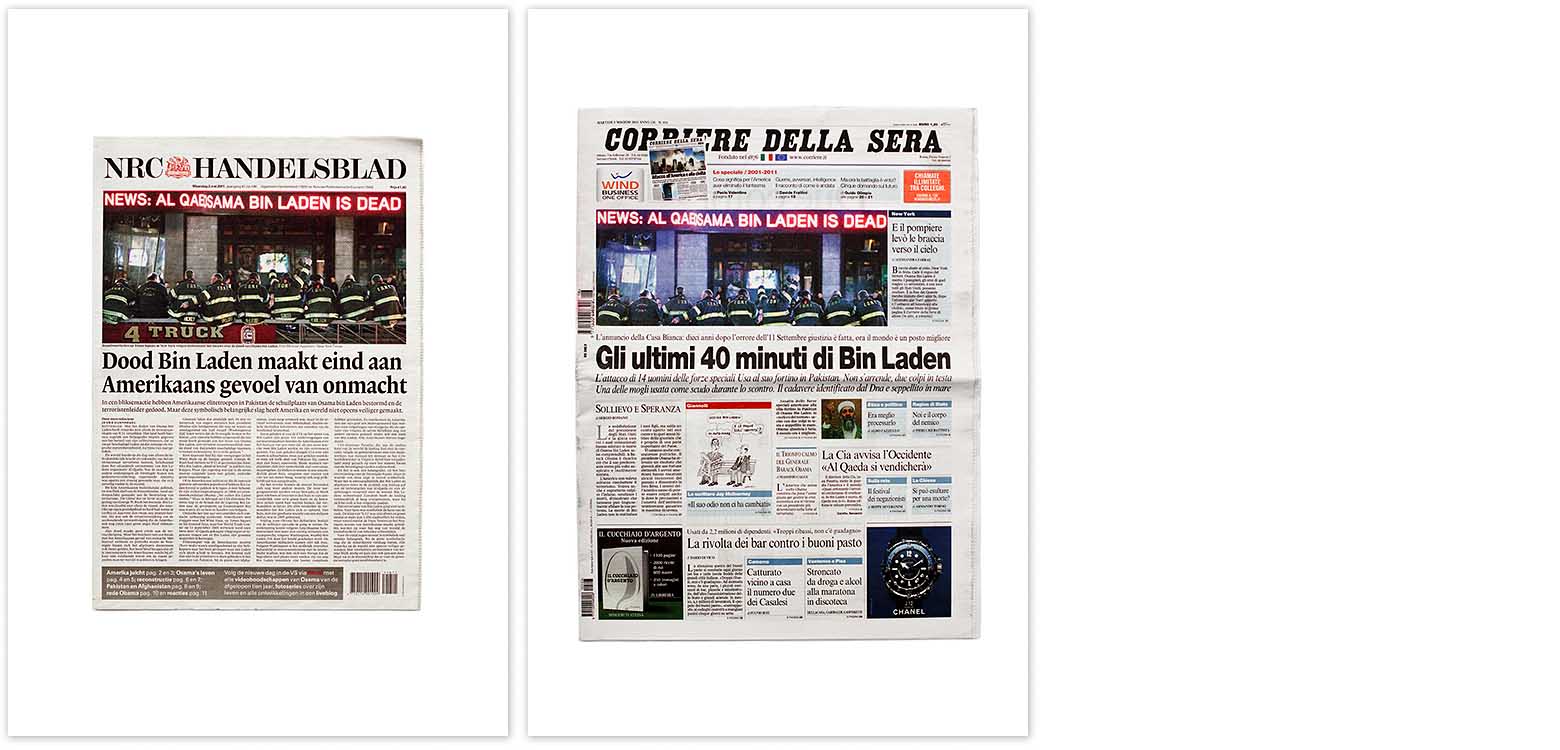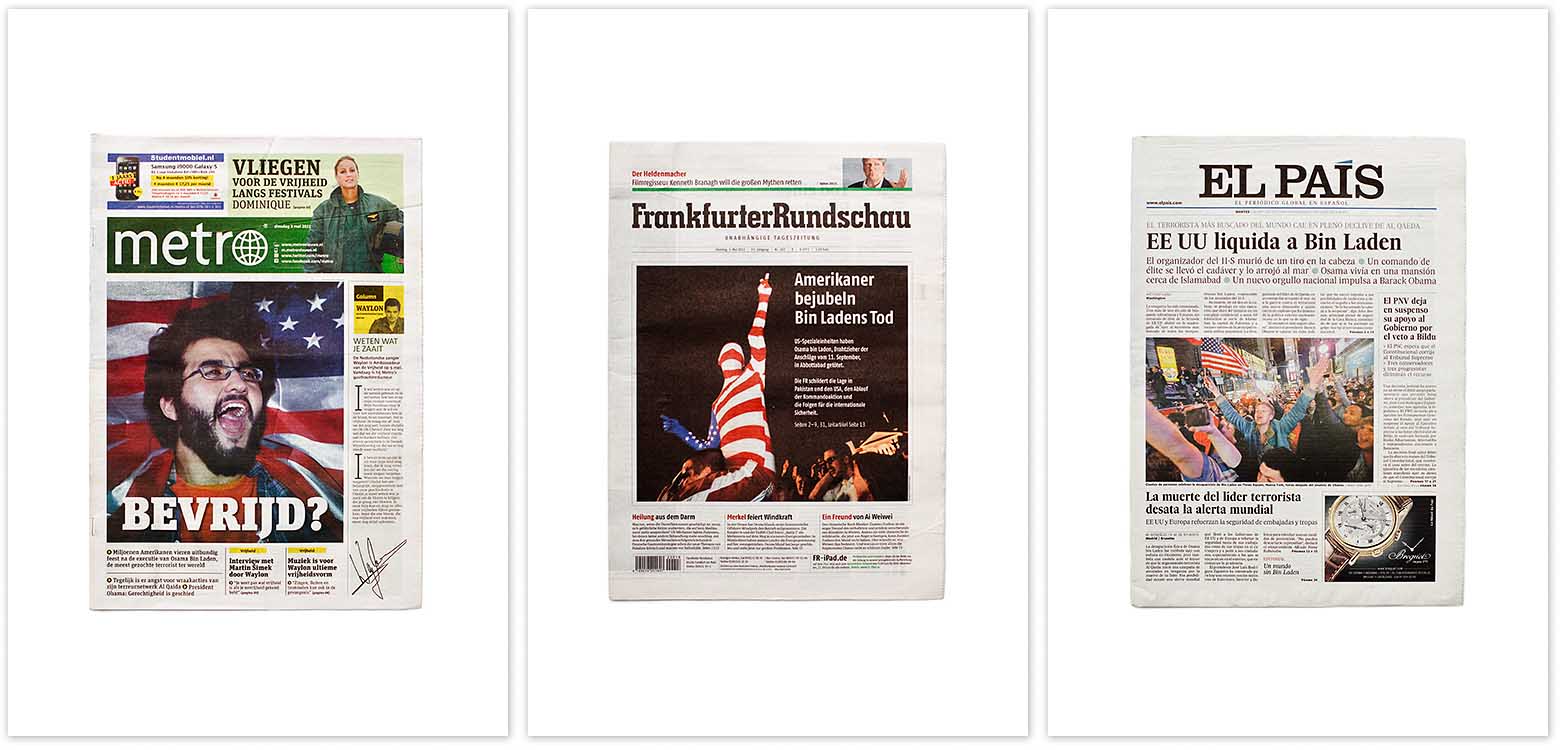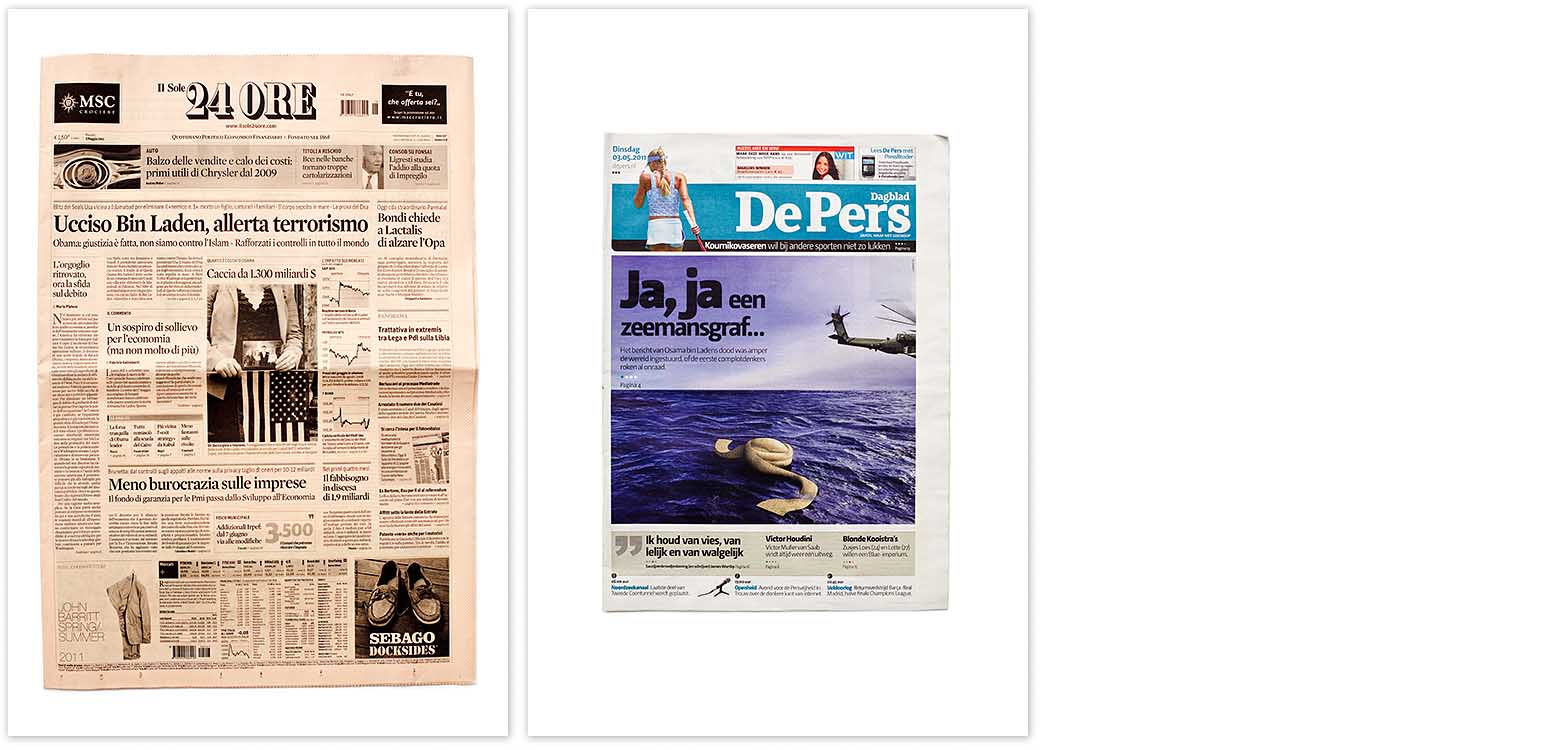The Osama papers
On may 3, 2011 something intriguing happened. The world media reported the death of Osama Bin Laden.
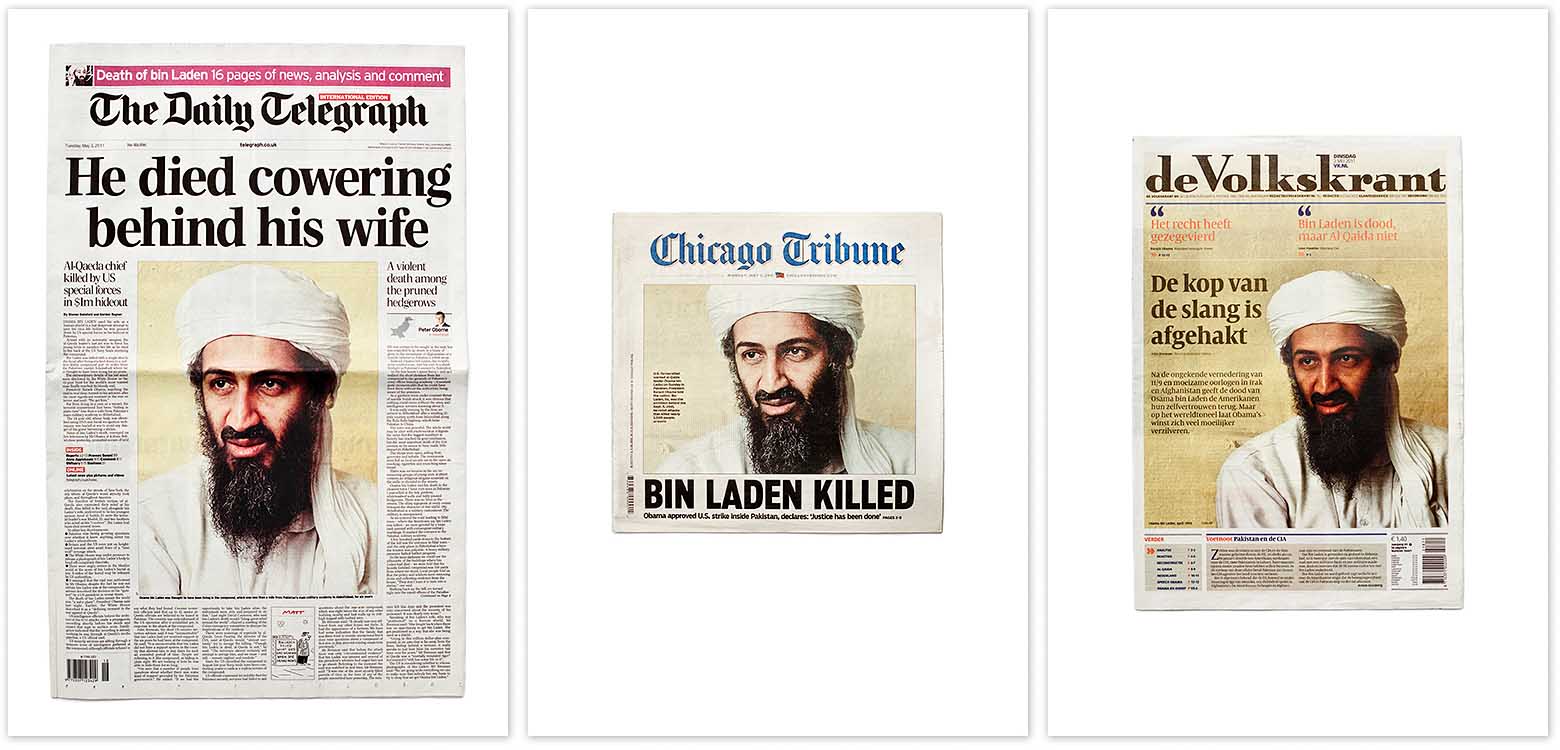
"Inherent in the visual manipulations of the Osama portraits is a resistance to the vacant space of the absent corpse."
– Katja Müller-Helle (Postdoctoral Researcher, BildEvidenz Center for Advanced Studies Berlin) on Popelier's Osama Papers for the exhibition This is Willem Popelier (2012) at C/O Berlin, Berlin.
When the twin towers collapsed 10 years earlier, this event was highly visualized. One can almost say the event had such an impact because of the live imagery of the event. Five years later, Hans-Peter Feldmann collected 100 newspapers from september 12, 2001 to show what an impact it had, visualy.
In 10 years time, newspapers have changed. People read more news on the internet, newspapers are struggling to exist.
The images of the death of Saddam Hussein raised a discussion whether or not the media should show such graphic images. When Muammar Gaddafi was killed, once again there where graphic images of his death used by media worldwide. But when Osama Bin Laden was killed, there where no pictures of this fact. Media now had a problem: how to visualize this important media event for their public?
Suddenly there is this big news which has to be printed - but there are no images. Newspapers had to think out of the box for once, in ways they are hardly ever forced to. If there are no images, there is no news.
60 inkjet prints, glass, 33x48 cm, 2012
Essay by Katja Müller-Helle
Interview by Katja Müller-Helle
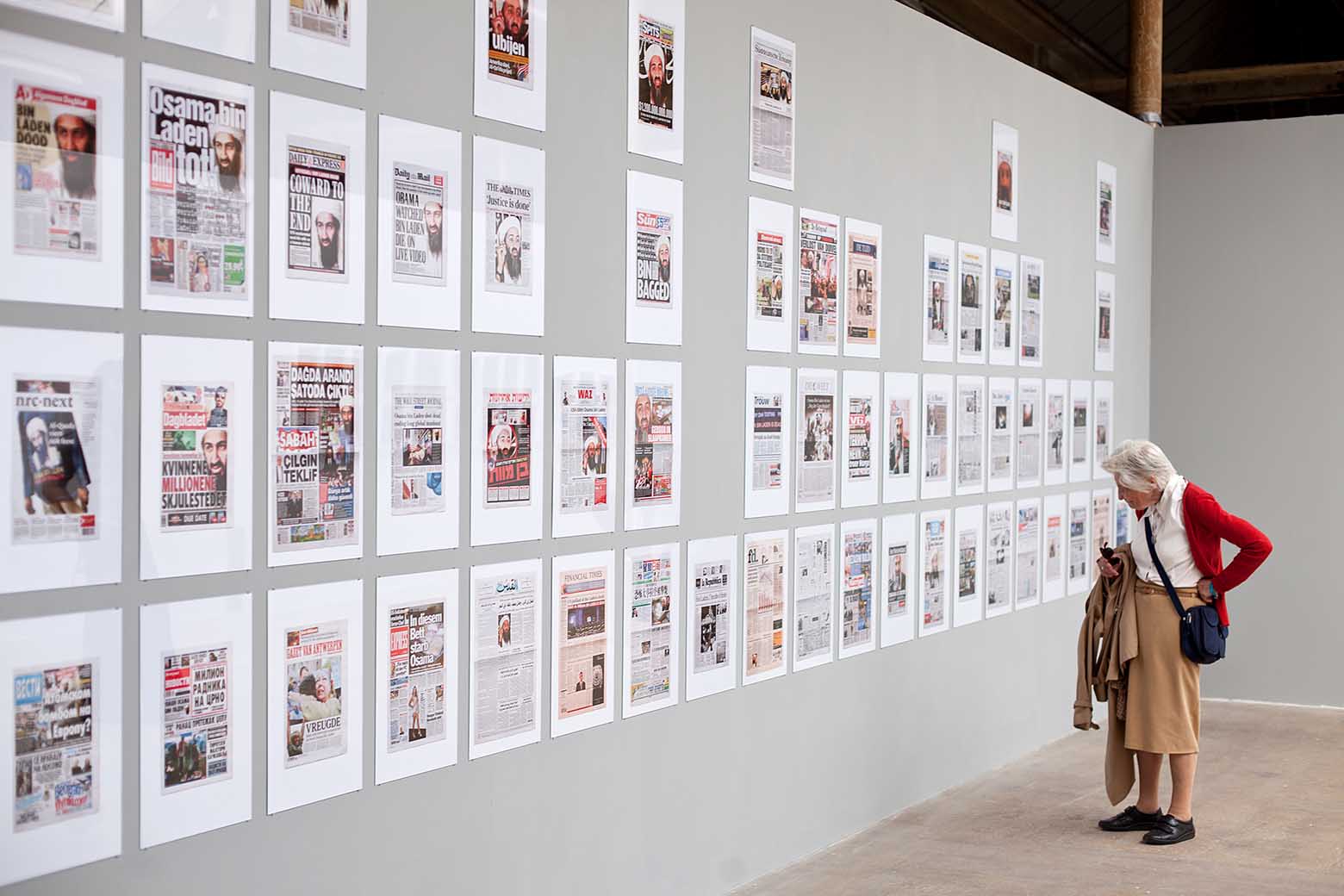
Exhibition view at F/Stop Fotofestival Leipzig, 2012
